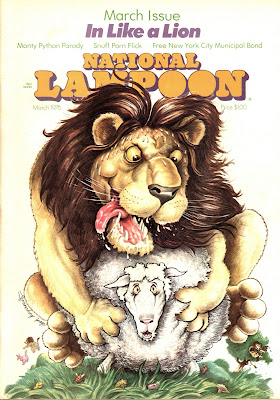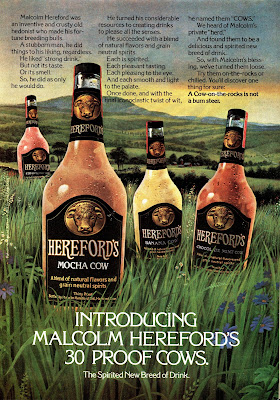Book Review: 'Cthulhu 2000'
edited by Jim Turner
'Cthulhu 2000' first was published in hardback in 1995 by Arkham House. This Del Rey trade paperback version (398 pp.) was issued in June, 1999 and features cover art by Bob Eggleton.
The stories and novelettes compiled in 'Cthulhu 2000' all first saw print in the interval from 1964 to 1993.
I should note that the selections in 'Cthulhu 2000' have mild horror content. They were not intended to explore the Mythos in the splatterpunk manner of Alan Moore (with, for example, his Neonomicon and Providence properties), but rather, to see how different authors take inspiration from Lovecraft and his view of the cosmos.
My capsule summaries of the contents:
The Introduction is provided by Jim Turner (1945 - 1999), who was an editor at Arkham House from 1973 to 1996. It's badly overwritten and more than a little pretentious (for example, at one point, Turner uses the adjective 'perdurable'). Rather than remarking on the stories, as an anthology editor is supposed to do, Turner tries to use the Introduction as a vehicle to demonstrate his erudition concerning the universality of all things Lovecraftian. I was bored.
The Barrens, by F. Paul Wilson (1990): Jonathan Creighton is a seeker of Eldritch Knowledge and hopes to find it in the wilderness of the New Jersey Pine Barrens. A decent Mythos tale.
Pickman's Modem, by Lawrence Watt-Evans (1992): Henry Pickman likes to participate in online chat rooms. The problem is, his PC's modem is of unusual design. A clever updating of the Mythos for the early 1990s, and the age of America Online, DOS, and floppy disks. One of the better entries in 'Cthulhu 2000'.
Shaft Number 247, by Basil Copper (1980): in a dystopian future, within the confines of a massive underground city, something odd is happening. This story has an interesting sci-fi / dieselpunk setting, but the denouement is too restrained to be effective.
His Mouth Will Taste of Wormwood, by Poppy Z. Brite (1990): two bored Goths try to spice up their jaded lives by dabbling in occult rituals. Laced with splatterpunk imagery, and tinged with carefully crafted notes of squalor, this is a standout piece in the anthology.
The Adder, by Fred Chappel (1989): Uncle Alvin drops a book off with his nephew for safekeeping. The problem is, the book is an excerpt from the Necronomicon......This story has a decidedly 'literary' quality, dependent as it is on myriad excerpts from the poetry of Milton. I can't say I found it electrifying.
Fat Face, by Michael Shea (1987): two Working Girls in L.A.'s red-light district attract the attention of an odd man whose office in a nearby building offers 'hydrotherapy'. Shea's overwriting handicaps this story, which otherwise could have been a good entry in the Mythos canon.
The Big Fish, by Kim Newman (1993): Los Angeles, February, 1942, and a private eye is investigating the whereabouts of a major underworld figure. Could the weird 'Church of Dagon' in Venice Beach shed some light on the subject ? Newman's story is a carefully crafted homage to Chandleresque private-eye fiction.
"I Had Vacantly Crumpled It into My Pocket......But By God, Eliot, It Was a Photograph from Life !", by Joanna Russ (1964): Irving Rubin, a virgin and geek, meets the woman of his dreams. Or is she ? This story's relevance to the Mythos is negligible.
H. P. L., by Gahan Wilson (1990): a Fanboy travels to Providence, and meets Howard Phillips Lovecraft in the flesh. Although....... it's 1990, the Great Man is 100 years old, and in seemingly very good health. But didn't H.P.L. die in 1937 ?! An affectionate treatment of H.P.L. and his legacy.
The Unthinkable, by Bruce Sterling (1991): what if the Cold War had been waged with Eldritch Magic ? This is one of Sterling's most imaginative short stories, and the best entry in the anthology.
Black Man with A Horn, by T. E. D. Klein (1980): a Christian missionary returns from a remote region of Malaysia, with disturbing tales of a malevolent entity who is worshipped and feared by the natives. This novelette has the strengths and weaknesses of Klein's fiction: the plot unfolds in a well-composed and deliberate manner, but the denouement is purposely vague in order to emphasize the 'quiet' flavor of horror.
Love's Eldritch Ichor, by Esther M. Friesner (1990): Robin Pennyworth, a downtrodden editor at a romance novel publishing house, is assigned a manuscript from a Miss Pickman of Arkham, Massachusetts. The manuscript is quite unusual for a romance novel...........for example, what author would use the adjective 'batrachian' ? This is a comedic story, that quickly becomes too cutesy for its own good.
The Last Feast of Harlequin, by Thomas Ligotti (1990): the first-person narrator is an academic who specializes in the anthropology of the clown figure. Hearing about a Winter Solstice festival, featuring clowns, held in the remote town of Mirocaw, he decides to attend. And discovers there are Eldritch Mysteries underlying the town's eccentricities. While slow-paced and deliberate, this story is a very good homage to the Mythos, and delivers requisite horror in its closing pages. Another of the better entries in this anthology.
The Shadow on the Doorstep, by James P. Blaylock (1986): the first-person narrator relates his history of examining unusual aquariums. A story that relies on atmosphere and mood, and doesn't offer much of a payoff.
Lord of the Land, by Gene Wolfe (1990): Cooper, a scholar of folklore and Eldritch Knowledge, interviews a Tennessee man about a strange apparition. The premise is interesting, but this is not really a hardcore Mythos tale.
The Faces at Pine Dunes, by Ramsey Campbell (1980): Michael and his creepy parents are 'travellers', and have parked their caravan at the eponymous campground. Strange things are happening in the wooded area adjoining the Pine Dunes. Campbell's prose is as florid as ever ('.....a sea dark as mud tossed nervously and flopped across the bleak beach'). But there is a functioning plot, and sufficient allusions to the Mythos, to make this tale a convincing Cthulhu encounter.
On the Slab, by Harlan Ellison (1981): an overwrought retelling of an ancient Greek myth. Its qualification as an entry in the Mythos is faint, at best. I have been tired of Harlan for a while, now..........
24 Views of Mt. Fuji, by Hokusai, by Roger Zelazny (1985): a woman named Mari conducts a pilgrimage in the vicinity of Mount Fuji. We are gradually informed that she is going to contest with a cyber entity for the Fate of the World.
This novelette is the longest, and least impressive, of the entries in 'Cthulhu 2000'. Zelazny writes as if the New Wave approach to diction still operated in 1985 (the year this story was published) and as a result '24 Views' is burdened with stilted, pretentious prose. The story picks up momentum in its final pages and reveals that, had Zelazny observed a degree of restraint, '24 Views' could have been memorable, instead of disappointing.
The verdict on 'Cthulhu 2000' ? There simply are too many duds to raise this anthology higher than a three star Rating. Mythos aficionados will want a copy, but others can pass on it without penalty.
















































.jpg)



















